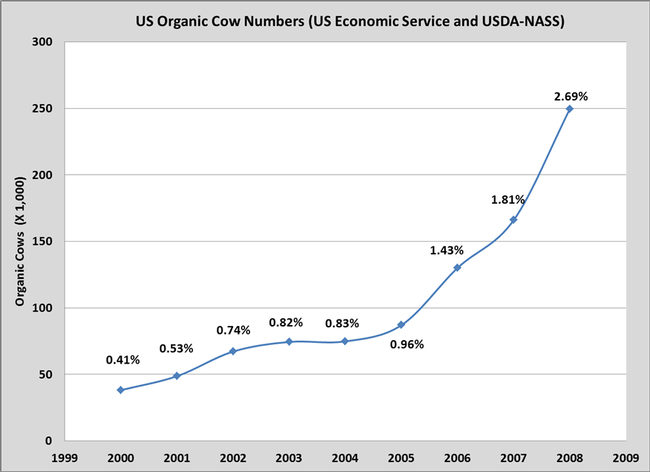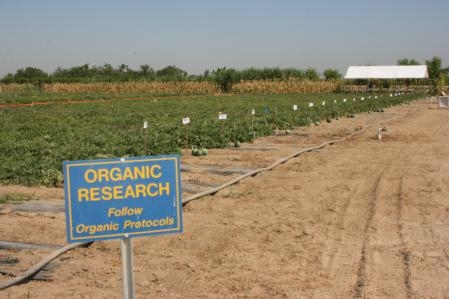
Among the conditions necessary for a cow to produce organic milk, she must eat only organic feed or browse on organic pasture for at least the previous 36 months. However, dairy producers have found that producing or sourcing organic feed – which must be grown with no synthetic fertilizers, insecticides or herbicides – is challenging. Recently organic alfalfa made up nearly 1.4 percent of U.S. alfalfa hay production, up from .5 percent in the early 2000s.
Dan Putnam, UC Cooperative Extension specialist in the Department of Plant Sciences at UC Davis, an alfalfa expert, said one key obstacle for organic alfalfa producers is weed management. Putnam put together a team of alfalfa hay experts to conduct an alfalfa weed management trial at the UC Kearney Agricultural Research and Extension Center, where 10 acres are set aside to research organic production.
In 2011, Putnam; Carol Frate, UCCE advisor in Tulare County; and Shannon Mueller, UCCE advisor in Fresno County, experimented with timing seeding and early clipping to manage organic alfalfa in a weedy field.
“Alfalfa can be planted from early September all the way through the fall and winter to early spring, depending on weather patterns,” Putnam said. “Many farmers plant in late November and wait for rain to bring the crop up. Other options are irrigating the crop up in early fall or waiting till early or late spring to plant the crop. All of these strategies have implications for weed management.”
The late November planting is quite common since, compared to a September planting, it saves farmers the trouble of putting out sprinklers. However, late fall plantings failed in this experiment.
“We had a lot of weed intrusion at that point as well as cold conditions for alfalfa growth, so the stands were poor,” Putnam said.
The earlier planting also had weed intrusion, but the researchers clipped the field when the alfalfa was 10 to 12 inches high in early spring. The clipping cut back weeds that were overtopping the alfalfa, giving an advantage to the vigorous young alfalfa seedlings.
An early spring planting after tillage to destroy weeds also resulted in a good stand, but some production was lost in the first year compared with early fall plantings.
“Many growers are starting to realize that early fall (September/October) is a better time to start their alfalfa crops,” Putnam said. “With organic growers, it is even more important to pay attention to time of seeding because they have so few weed control options.”
While this research is conducted on organic alfalfa, Putnam said the results are also applicable to conventional alfalfa production, which represents more than 98 percent of California's total alfalfa crop.
“Timing has a profound effect on the first-year yield and health of the crop and its ability to compete with weeds,” he said.
Putnam, Mueller and Frate will share more information about the organic alfalfa trial during a field day at Kearney, 9240 S. Riverband Ave., Parlier, from 8 a.m. to 12 noon Sept. 5. The field day will feature the organic production trials, alfalfa variety trials, sorghum silage and nitrogen trials, and optimizing small grain yields. Other topics will be alfalfa pest management, irrigation and stand establishment.
Attached Images:
